8 Things to keep in mind around Oak Trees
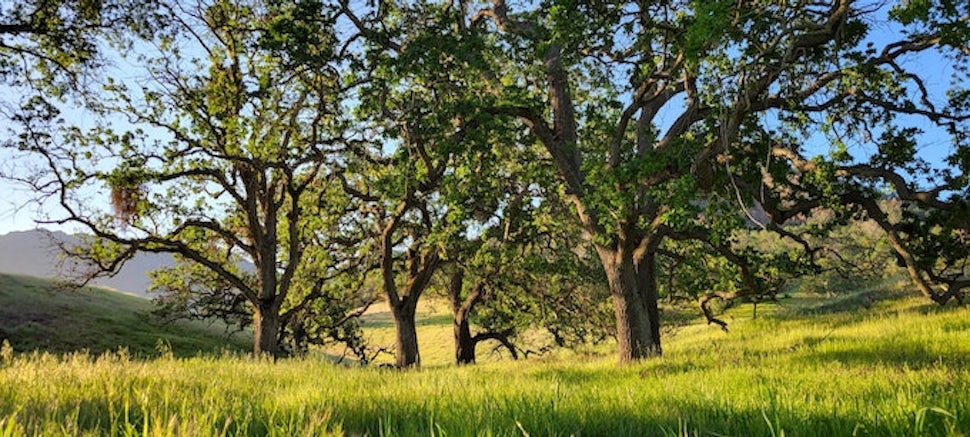
“Woodland areas are alive. The plants, the animals, insects, everything has a living spirit, and we need to respect those things.” -Eric Wilder, Kashaya Pomo Cultural Consultant, at the Sixth California Oaks Symposium, 2006.
It took me 30 years to become really acquainted with one of the most significant beings to shape the land on which I was born. The oak tree: ubiquitous, yet just out of reach for someone like myself, never having gotten a proper introduction.
My awareness of the “oak” had pretty much been limited to city and street names, the backdrops of movies, firewood and lumber, and glimpses off the side of the freeway during long drives. It wasn’t until a recent job had me regularly immersed in the so-called Santa Monica mountains (homelands of the Chumash, Tataviam, and Tongva nations) that I couldn’t help but develop a deep wonder and adoration for the most prolific tree around. As trite as it sounds, I grew to be so awestruck around oaks that at times I’d be called to tears.
It was no surprise that my newfound reverence was heavily precedented by so many Native nations who continue to care for and have relations with oak trees since the beginning. Prior to ongoing colonization, the violent mission system, and continued land degradation, this western region of the continent was beautifully abundant in oak habitats. These habitats influenced human and more-than-humankind alike and continue to hold this influence even as their expansiveness dwindles steeply.
Vital and loved as anchors of cultural and ecological landscapes, oak trees are more than worth a mindful moment.
And it doesn’t have to start with a guidebook or a botany class. Next time you come across an oak tree, be still beneath one, engage all of your senses, and notice some or all of these 8 things:
1. The Size and Form
It’s hard not to notice how massive many oak trees can get. Their branches create winding, gnarled paths, sometimes even meeting the ground like elbows propping themselves up. They create enveloping canopies, and no two look quite the same. I like to take in the grandiose presence, then notice how sunlight moves throughout the tree, realizing it is made up of thousands of small parts.
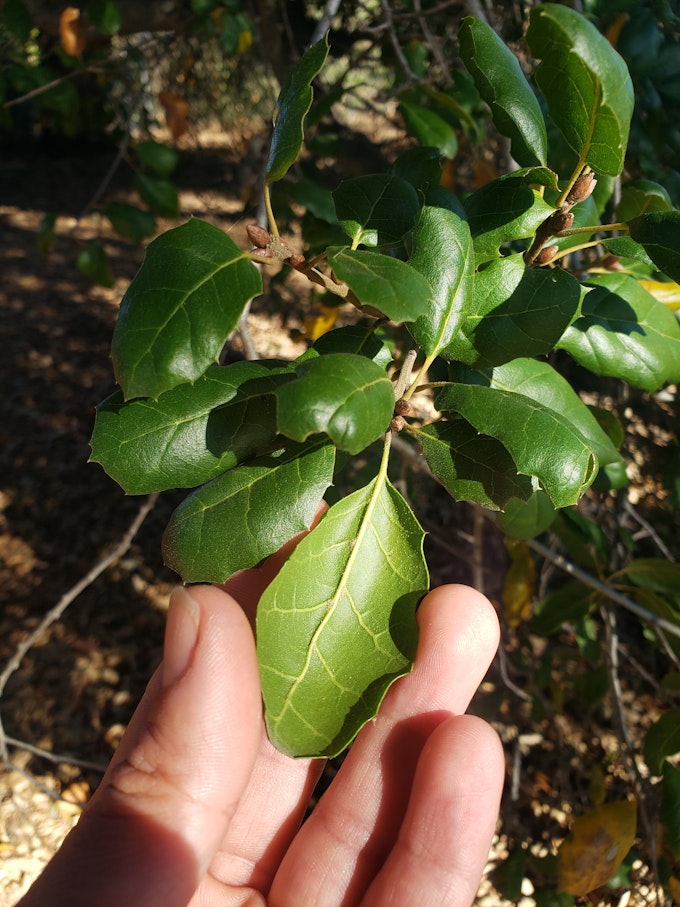
2. The Leaves
There are currently over 20 species of oak in California, each with varying leaf attributes. Some are smooth, others jagged. Some are evergreen, others drop in autumn. Choose the end of one branch and notice the leaves. How would you describe the color? What does their shape remind you of? Do they move with the wind, or are they mostly still? Oak trees spend their lives in one spot; consider how beautiful it is that these leaves help create the food necessary for each oak to survive through different generations.
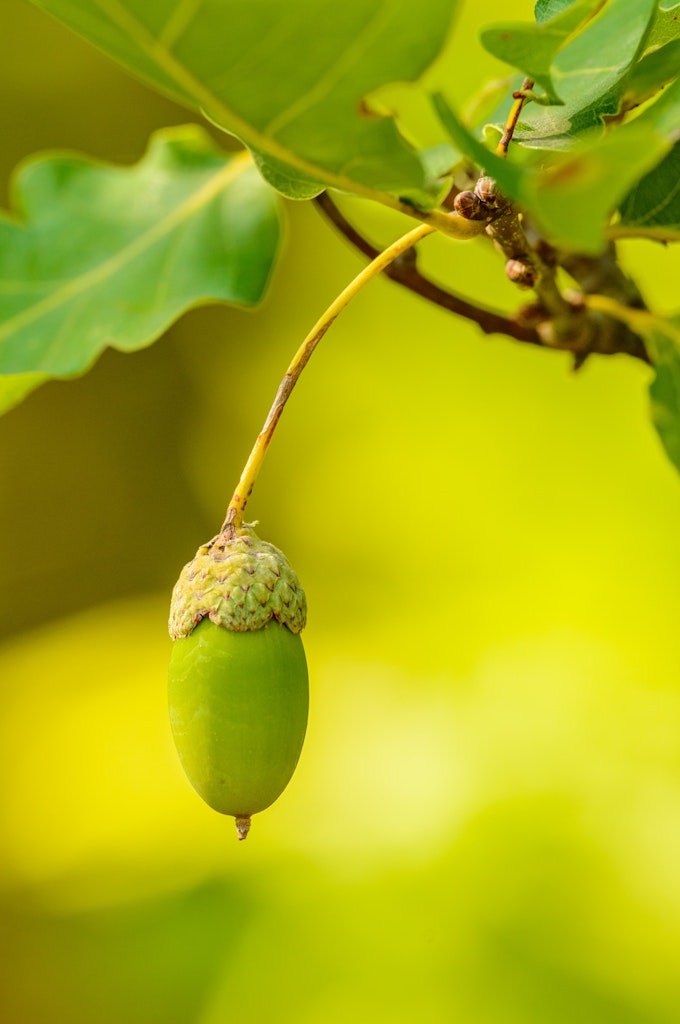
3. The Acorn
The acorn is the beginning of life for every oak tree, and its significance to Indigenous Peoples of this region runs deep.
According to a KCRW interview with Heidi Lucero, a culture bearer of the Acjachemen nation in so-called Orange County, the acorn is tied to creation for many nations, and is highly sacred. Through an intricate processing system that includes leaching, roasting, and granaries, the acorn is commonly prepared as a sort of porridge, the Acjachemen word for which is “wee-wish.”
While commenting on the flavors of different acorns, Lucero notes the importance of seeking relations and permission when gathering on the lands of neighboring nations. Many people will also wait until the second drop, to ensure animal relatives have received their portion as well.
Depending on the time of year you are connecting with oak trees, the acorns may be scattered on the woodland floor, or perhaps just beginning to fruit, or maybe they aren’t quite present yet at all. In any case, contemplate the cycles at play and the conditions required for our resources to exist. Remember that they are more than mere resources, they are brilliant and regenerative gifts.
4. The Surrounding Trees
As you are taking deep breaths, spending quiet moments among the oaks, it may be surprising to know that you are present with a highly communicative group! Like human societies, a woodland’s survival is dependent on systems of knowledge sharing and distribution based on need. To neighboring trees, oaks are constantly sending resources and information through their root systems and incredible underground mycelium networks. They’ve also been observed to have familial relationships, knowing their offspring and parents.
If you’re able, make contact with the earth beneath you, and imagine you are sending or receiving messages and nourishment.
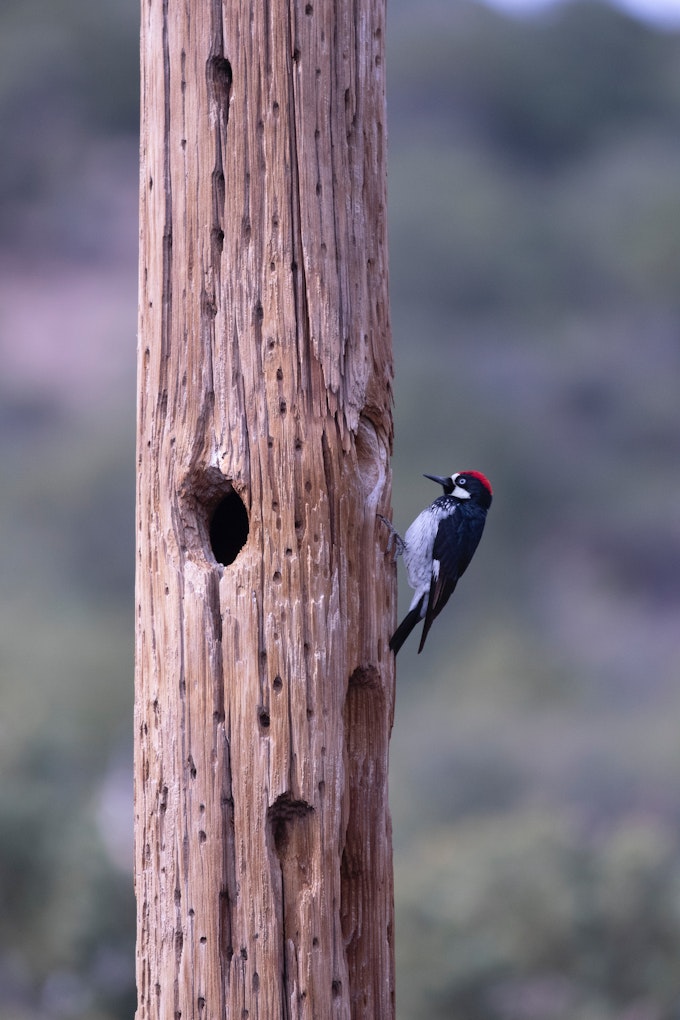
5. Animals Present
Adult oaks can support hundreds and hundreds of non-tree species. In fact, they provide support to the most amount of beings than any other woody plant in North America, according to Princeton Field Guides’s Trees of Western North America.
Here are a few notable creatures you may see signs of:
The California Sister Butterfly, named for their resemblance to a nun’s habit, has orange tipped wings to remind birds that, while they aren’t poisonous, they don’t taste very good.
The Dusky-footed Wood rat can create complex, multi-level structures that have been known to last for decades in oak woodlands.
The Acorn Woodpecker has unique and highly structured social systems that allow them to reserve assets and nurture support. Keep an eye out for acorns stuffed into tree trunks!
6. The Climate
On a hot day, there is always refuge among the oaks. Notice the change in temperature on your skin as you walk under the canopy. In addition to offering shade, oak trees draw up ground water, cooling the surrounding area. In his inspiring book, The Hidden Life of Trees, Peter Wohlleben writes '...Beech and oak forests can cool down the surrounding landscape by about 10 degrees.'
Additionally, oaks are responsible for a considerable amount of carbon sequestration, meaning they store carbon, keeping it out of the atmosphere.
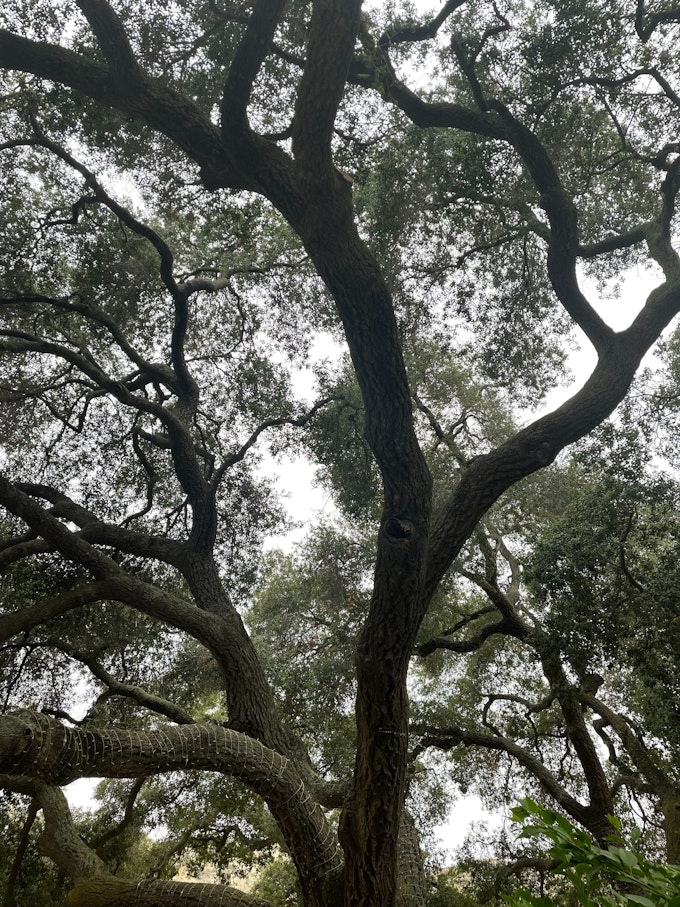
7. Your Feelings
Notice how you feel when you engage your senses around oak trees. Try to keep track of your state of mind prior to your outing and check in with yourself after spending time among oaks.
Trees offer invaluable lessons in generosity and gratitude that we can carry on into our daily lives.
8. Stewardship
The majority of oak communities in California are “privately” owned. Consider the implications of this private land ownership now that we’ve pondered the beautifully invaluable relationships and care that exists within ecological communities.
There remains a host of threats against oak habitats including housing developments, industry exploitation, deforestation, wildfires, invasive species, and drought, just to name a few. What resources and capacities do you hold that enable you to support oak trees and all of the beings affected in their wake?
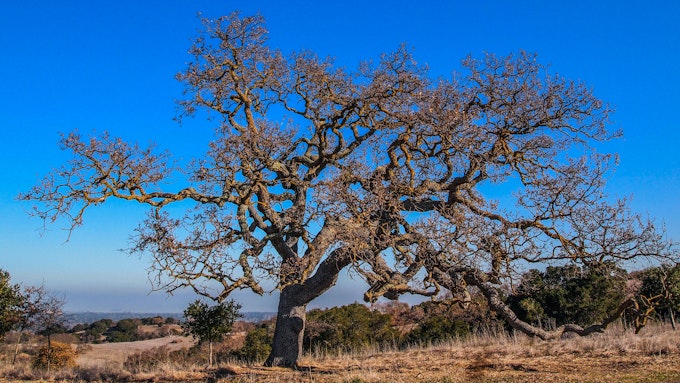
Because oak trees are in the midst of decline due to colonial and capitalistic violence and ventures, and because our communities face parallel encroachments, care and connection remain imperative. These 8 reminders allow us to have intention when visiting woodlands, and give us space to feel, wonder, and plan to act.
“To consider a plant medicinal, most people think of pain or comfort management, but that’s too simple; medicine is a healthy land, healthy water and healthy air, all of which the oak trees constantly give us.”
- Nicholas Hummingbird, Indigenous cultural and plant educator, in a Los Angeles Times article titled “What are the 7 most important native plants in L.A.?”
_____
If you are in California, you are probably within a day’s trip of some incredible oak habitats. If you are able to visit, remember the Native communities who have been caring for the very spaces you’ll be entering, and seek ways to offer tangible support.
Here are some great places to start:
Malibu Creek State Park (Chumash, Tongva, Tataviam homelands),
Sierra Foothills Conservancy Preserves (Me-Wuk homelands),
Sonoma County Regional Parks (Kashaya Pomo homelands),
Wi’áaşal - The Great Oak is the oldest tree on earth at over 1,000 years old. Not long ago, there were others like it. This resilient relative resides on the land of the Pechanga band of the Payómkowishum (Luiseño) Nation in Temecula.
We want to acknowledge and thank the past, present, and future generations of all Native Nations and Indigenous Peoples whose ancestral lands we travel, explore, and play on. Always practice Leave No Trace ethics on your adventures and follow local regulations. Please explore responsibly!
Do you love the outdoors?
Yep, us too. That's why we send you the best local adventures, stories, and expert advice, right to your inbox.







